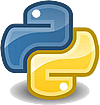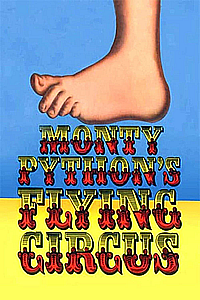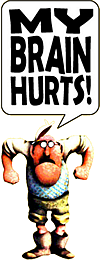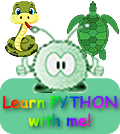 Python
Python 

 Python is a very-high-level, general-purpose programming language.
Python is a very-high-level, general-purpose programming language.
 Guido van Rossum began working on Python in the late 1980s as a successor to the ABC programming language and first released it in 1991. He chose the name "Python" when he was in a slightly irreverent mood as a tribute to Monty Python's Flying Circus - as he loved the program!
Guido van Rossum began working on Python in the late 1980s as a successor to the ABC programming language and first released it in 1991. He chose the name "Python" when he was in a slightly irreverent mood as a tribute to Monty Python's Flying Circus - as he loved the program!
 It was created to emphasize 'code readability' and use is made of significant indentation - blocks of coding in that language are expressed by their indentation.
It was created to emphasize 'code readability' and use is made of significant indentation - blocks of coding in that language are expressed by their indentation.
 Python is a dynamic typed language.
Python is a dynamic typed language.
When declaring a variable in Python, you don't have to specify a type for it as you have to do in Java. But you can do so by using the type() function to get the type of the objects which variables reference.
 Python is garbage-collected and it supports multiple programming paradigms including:
Python is garbage-collected and it supports multiple programming paradigms including:
 structured (particularly procedural),
structured (particularly procedural),
 object-oriented and
object-oriented and
 functional programming.
functional programming.
 Python consistently ranks as one of the most popular programming languages and is often described as a "batteries included" language due to its comprehensive standard library - click on the graphic below to go to extensive reference material available online.
Python consistently ranks as one of the most popular programming languages and is often described as a "batteries included" language due to its comprehensive standard library - click on the graphic below to go to extensive reference material available online.

 To come with me on a journey into Python territory click here to go to the 'lessons' page. As I learn I will share my progress (and route) with you.... hopefully our brains will not hurt like Mr. Gumby's brain always does...
To come with me on a journey into Python territory click here to go to the 'lessons' page. As I learn I will share my progress (and route) with you.... hopefully our brains will not hurt like Mr. Gumby's brain always does...


 Python
Python 




